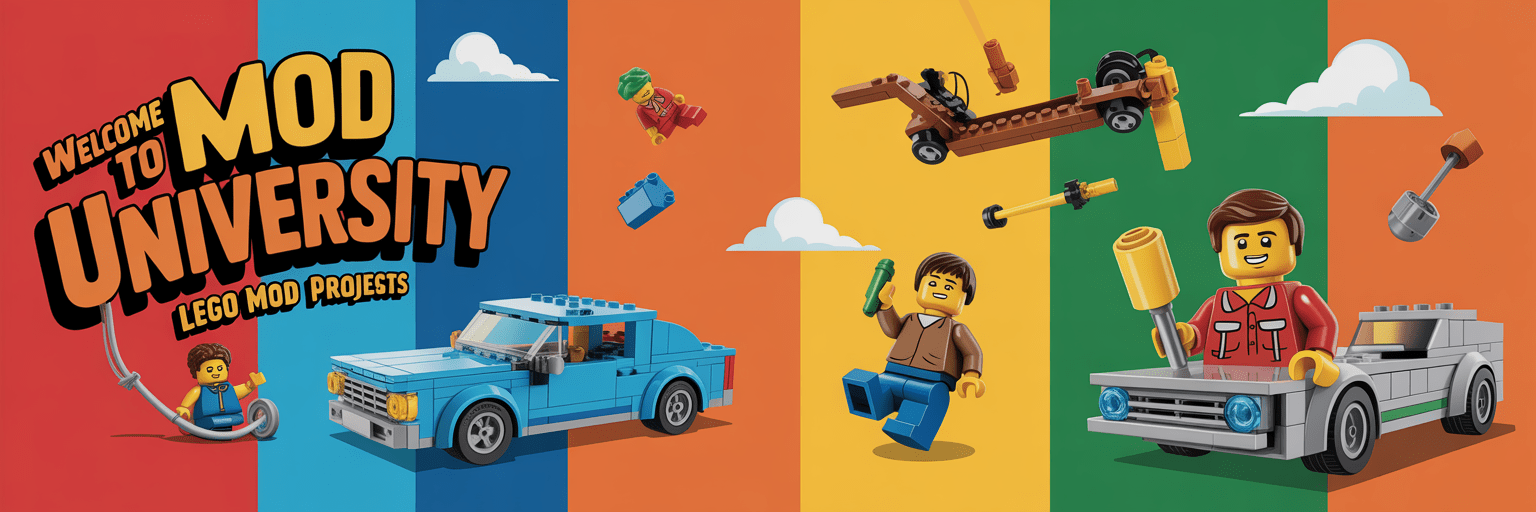MOD U: Tips of the Trade
Simple habits, hidden shortcuts, and veteran tricks to make your Mini-MODs look like they belong in a LEGO designer’s showcase.
1) Mindset First — Build Small, Think Big
The best builders don’t think about the number of pieces; they think about the story per stud. Every 4×4 area should earn its space. If it doesn’t tell part of your story, pull it and simplify.
2) Sort for Speed, Not Perfection
Forget perfect sorting bins. Keep a “speed tray” of versatile elements—brackets, jumpers, clips, bars, and 1×2 plates. These are the Swiss Army parts of Mini-MODs. A 10-minute pre-sort before building pays dividends in creativity.
- Use muffin tins or small bowls for quick categories (plates, slopes, clips, tiles).
- When an idea strikes, grab your tray and start building right away.
- Clean up after each MOD; it resets your creative flow.
3) Reinforce Early, Not Late
New builders tend to decorate first, then fix structure later. Pros flip that. Start every build by locking sub-assemblies with perpendicular connections, even if it’s ugly for a few minutes. Once solid, you can skin it with details.
4) Small Details, Big Impact
- Use minifig accessories for micro details (whips, horns, wands = pipes, cables, brackets).
- Pair clip + bar combos for angled handrails or tiny signposts.
- Mix tile finishes: Matte + glossy tiles create texture contrast in photos.
- One-off Easter eggs like a hidden frog or classic logo bring joy and shareability.
5) Color Management 101
Don’t color by availability—color by intent. Use the H+S+N+A rule (Hero + Support + Neutrals + Accent) from the previous class. Build in grayscale first, then add color last; this forces your design to read by form and contrast, not hue.
- Limit yourself to 3–4 hues per build.
- Keep bright colors close to the focal object.
- Use tiles of different sheen to simulate lighting variation.
6) Display & Photography
Presentation sells your build. Even the simplest MOD looks professional with clean lighting and background separation.
- Shoot near a bright window, with light at 45° to the build.
- Use a plain background: white, light gray, or light blue works best.
- Hold a white sheet of paper opposite the light to bounce shadows.
- Keep your phone camera low—eye-level gives your micro-build scale.
7) Finishing Touches Pros Never Skip
- Tile visible base edges to make them photo-ready.
- Check color alignment (especially stripes and signage).
- Add one subtle storytelling clue (a fallen cone, open drawer, or minifig handprint).
- Give the build a nameplate tile—it feels complete.
8) Reflection & Rebuild
Don’t stop when the MOD is “done.” Rebuild it with one self-imposed restriction: fewer parts, new palette, or different angle. This is where you move from casual builder to designer.
What’s Next?
Apply these trade secrets to your next Mini-MOD challenge—then share your before/after photos for community feedback. Every iteration sharpens your design instincts.
Return to MOD U Home